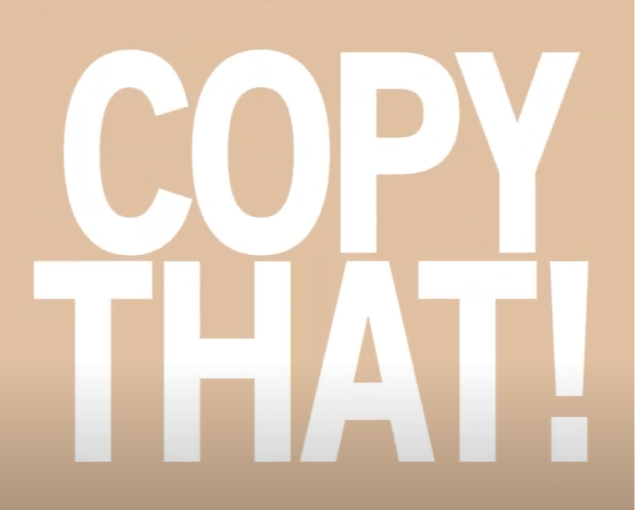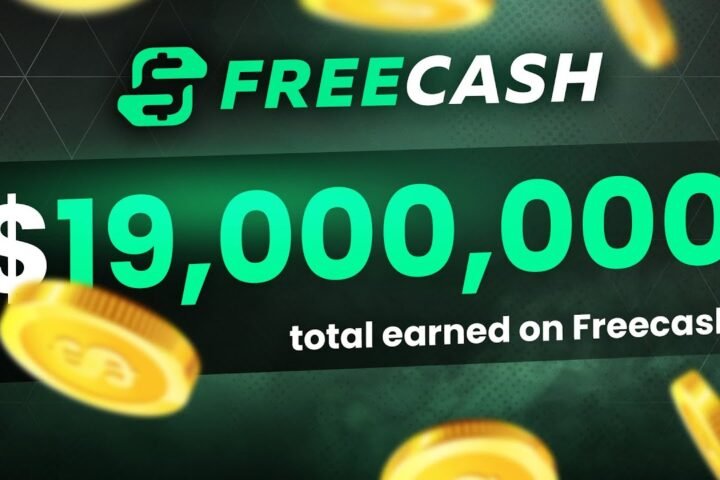The phrase “copy that” is one of the most recognizable expressions in both professional and casual settings. Often heard in military, law enforcement, business, and everyday conversations, it carries a range of meanings and uses. In this article, we will explore the origins, different interpretations, and various contexts where the phrase “copy that” is used, and how it has evolved into a ubiquitous part of modern language. Whether you’re a communicator, a leader, or just curious about linguistic trends, understanding the significance of “copy that” can help you use it more effectively.
What Does “Copy That” Mean?
The phrase “copy that” is primarily used to acknowledge that a message or instruction has been understood and will be acted upon. It’s a form of verbal confirmation, similar to saying “understood” or “roger that.” The phrase originated in radio communication, particularly in military and aviation contexts, where clear and concise exchanges are vital for operational efficiency. Over time, “copy that” has become more widely used in various industries and casual conversation.
The Origins of “Copy That”
“Copy that” dates back to radio communication used in military operations and aviation. In these high-stakes environments, clear communication is essential, and the need for concise language led to the development of specialized terms and jargon. “Copy” in this context comes from the verb “to copy,” meaning to replicate or record information. When someone says “copy that,” they are indicating they have received and understood the message, much like how one would take down a message by copying it onto paper.
During the mid-20th century, as military and civilian aviation communications became more standardized, terms like “copy that” were adopted into everyday speech. Radio operators, pilots, soldiers, and other personnel needed a quick, effective way to confirm messages, and “copy that” fit the bill perfectly.
Common Uses of “Copy That”
Today, “copy that” is used in various contexts beyond military operations, including business, law enforcement, and casual conversations. Below are some common uses of the phrase:
1. Acknowledging Instructions or Information
The most common use of “copy that” is to confirm that someone has understood instructions or information. This can occur in both formal and informal settings. For example:
- In a corporate setting:
Boss: “Make sure the presentation is ready by 3 PM, and send it to me for review.”
Employee: “Copy that, I’ll have it ready on time.” - In casual conversation:
Friend: “Don’t forget to bring the tickets tonight.”
You: “Copy that, I’ll bring them with me.”
2. Radio and Communication Environments
In aviation, law enforcement, military, and emergency services, “copy that” is a staple phrase used to confirm that a message has been received and understood. This kind of communication is vital in these fields because accurate understanding can have life-or-death consequences.
For example:
- Military context:
Commander: “We are proceeding to the target location at 0700 hours.”
Soldier: “Copy that, proceeding as instructed.” - Aviation context:
Air Traffic Controller: “Flight 220, please climb to 10,000 feet.”
Pilot: “Copy that, climbing to 10,000 feet.”
3. In Customer Service and Sales
In customer service or sales, “copy that” can be used to acknowledge a request or confirm a piece of information, often as part of providing clear and efficient communication.
Example:
- Customer Service Interaction:
Customer: “I need a refund for my purchase last week.”
Representative: “Copy that, I’ll start the process and send you the refund details shortly.”
4. In Tech and IT Communication
Tech support and IT environments are also places where “copy that” is frequently used. Whether discussing software issues, troubleshooting, or project updates, “copy that” serves as an affirmation that the details have been received.
Example:
- Tech Support:
User: “I’m experiencing an issue where my computer freezes during startup.”
Support Agent: “Copy that, let me check the system logs to diagnose the problem.”
5. In Pop Culture and Everyday Language
While “copy that” has roots in formal communication settings, it has made its way into everyday language, sometimes used humorously or even sarcastically. Its use in pop culture, movies, and TV shows has reinforced its recognition, making it a familiar expression even among younger generations who may not have direct exposure to military or aviation language.
The Popularity of “Copy That” in Media and Entertainment
The widespread use of “copy that” in television shows, movies, and video games has contributed to its mainstream popularity. Shows with military or tactical themes, like MASH*, NCIS, and 24, often feature characters using phrases like “copy that” to convey their professionalism and clarity in high-pressure situations.
- TV Shows and Movies:
In many action-packed films or series involving military, law enforcement, or emergency operations, characters frequently say “copy that” to confirm their understanding of mission details or instructions. For example, in military thrillers, characters use the phrase to keep communication clear during intense, high-stakes missions. - Video Games:
In strategy-based or first-person shooter games, “copy that” is often included in dialogue between players to indicate the acknowledgment of a plan or strategy. This adds to the realism and immersion of the game, making it feel as though the players are part of a cohesive team.
Variations and Synonyms of “Copy That”
While “copy that” is widely recognized, there are several other ways to communicate the same idea. Depending on the context, different phrases may be more appropriate. Some common variations include:
- Roger That: Often used in radio communication, “roger that” carries the same meaning as “copy that.” It originated from the early days of radio when “Roger” was used to represent the letter “R,” which stood for “received.”
- Understood: A straightforward synonym, often used in less formal or non-radio communication settings.
- Got it: A more casual, less formal alternative to “copy that,” often used in everyday conversations.
- Acknowledged: This is a more formal way of acknowledging something, often used in professional environments.
- 10-4: A term derived from the Ten-Code system used in law enforcement and CB radio communication, meaning “message received.”
Why “Copy That” Continues to Thrive
Despite its military and aviation origins, “copy that” remains a widely-used phrase because it is clear, concise, and universally understood. It provides a quick and effective way of confirming comprehension, especially in environments where precise communication is crucial. Additionally, its widespread use in popular culture has helped it transcend its original purpose, making it an accessible expression for people of all ages and backgrounds.
Conclusion: The Enduring Power of “Copy That”
From its military roots to its widespread use in modern-day communication, “copy that” has proven to be more than just a technical term. It is a versatile phrase that serves to ensure clear communication, whether in high-pressure environments or casual exchanges. Whether you’re in the military, working in customer service, or just communicating with friends and colleagues, “copy that” remains a staple phrase to ensure understanding and acknowledgment.
Its popularity shows no signs of waning, especially as it continues to appear in media, entertainment, and even casual conversations. By understanding the origins and uses of “copy that,” you can appreciate how language evolves over time and how phrases once rooted in specialized fields can become part of everyday vernacular.





